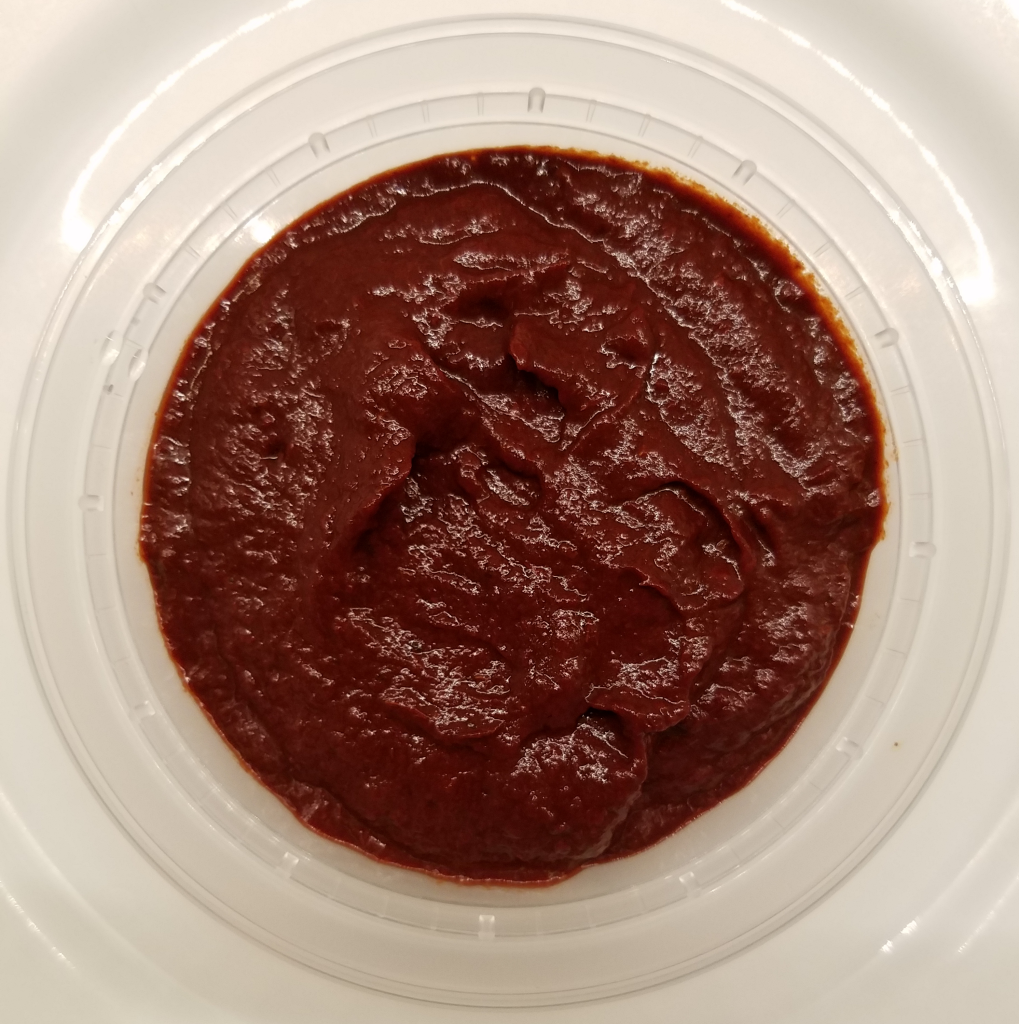
So you’ve reached that point in your home cooking where the tricks and flavors you’ve been using are now like that lonely end of the loaf of bread you baked 5 days ago…a little stale. Guajillo pepper paste (and its broth) is another of my go-to’s which can be added to almost anything year round.
This flavorful paste has been one of my key flavor ingredients in recent years. I’d add it to some side-salads, like our farmers market-fav couscous salad, as well as sauces and vegetables… Hint: if you see a photo from me on Instagram (@sausagekonig) and it looks reddish like there’s tomatoes in it but it’s a deeper red, chances are it’s this paste. Keep scrolling, you’ll see some examples below.
I read about this particular ingredient and technique in The Basque Book, by Alexandra Raij. The specific pepper used isn’t readily available here but the author recommends dried guajillo peppers as a reasonable alternative. Pretty sure any dried pepper can be prepared this way, so it’s a good recipe to test with some of your favorites. Personally, I’d like to try this with a smokier pepper.
The pepper paste doesn’t seem like much but is quite rewarding. It takes a little effort to make but isn’t so intensive as to be discouraging. Basically you take dried peppers, steeped in water, blitz in food processor, then pass through a fine sieve for a smooth paste. I don’t think it has quite the thickening properties as tomato paste but it does have the concentrated flavor. And let’s be honest here, there are plenty of ways to thicken a sauce other than tomato paste (and add more flavor in the process). Additionally the pepper paste lacks the acidity of tomatoes, which can sometimes complicate things when creating recipes. The paste is more bitter/savory than acidic/sweet. Great addition to sauces or finishing a dish.
One part about this paste which I really like and it took me a minute to wrap my head around (if you’re in food service you’ll appreciate this) is that the per oz. cost of the finished product is actually LESS than the original raw material cost. Yeah yeah, I know I’m not figuring in labor etc. but I still find it amazing that if you take a pound of dried peppers, soak them, puree, then strain, you end up with around 20oz of paste. Oh and don’t forget the excellent broth from the water you steeped the peppers in. I mean that’s practically free, right? Ha! Ok, ok, it’s not that much of a savings but it is rare to have a raw ingredient you process go down in cost.
Both the paste and broth can be frozen so make a good amount. Once you get this down you’re going to want to make a bigger batch to save because the straining part is kind of annoying.

What you’ll need to make this: dried guajillo peppers (or another favorite), water, food processor/food mill, and a fine mesh sieve like a tamis or conical sieve.
Start with an amount of dried guajillo peppers. For your first go I’d say try 6oz. I’d recommend taking a trip to a Mexican grocery store if you have one nearby. You can find all sorts of dried peppers there and in much larger quantities, as well as less expensive than in a regular grocery store. I make the paste with a pound of dried peppers at a time and while you may not think a pound of dried quajillo peppers sounds like a lot, remember they’re dried and don’t weigh much. Kind of like a pound of lead vs a pound of feather. Ok, got your peppers? Good.
Heat your oven to 400F. Put the dried peppers on a baking sheet and bake for at least 5 minutes. This toasts them a little bit and makes them pliable for the next step. Take the peppers out of the oven and remove the seeds and rib.

Fill a large pot with water, smaller amounts like 4-6 oz of peppers should be good with at least a quart. I usually do a pound in 3-4 qts, erring on the side of less water to steep in. You want a redder broth. Some will be stronger than others at first, trial and error will help you figure it out how you want it. Bring to a boil and add the deseeded peppers. Remove from heat, cover and let steep for 20 mins. Give a stir, agitate the peppers after 10 min. to make sure the ones on top get into the water. It’s a pretty full pot of peppers you go there.
Drain the peppers from the pot and reserve and strain the now flavored water. Makes a great broth!
Put peppers into a food processor or food mill and puree. Add a little of the reserved water to make a good paste.
Take the paste and pass/push it through the sieve into a bowl. You’ll be left with a smooth pepper puree in the bowl and pepper pulp in the sieve.
Your paste and broth are ready for use. I like to store 6oz of paste in small 8oz cups and freeze. I’ll store the broth in pint containers and also freeze. The paste usually keeps for a couple of weeks in the fridge. You don’t need much when adding to things like salads, sauces, etc. Usually a couple of spoonfuls will do. For example, the sauce on the pork tenderloin above was made with 1:1 ratio of pepper paste & honey, and lemon juice to taste.




Love it! I’ve got jars of ancho chile paste in my freezer, but it’s not just ancho chiles. I always include guajillo and chipotle and others. Just to mix it up. It’s so handy to add to soups, sauces, especially enchilada sauces. Great post!
Thanks! They’re a great flavor addition to almost everything.